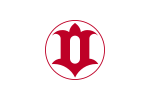Hitachi, Ibaraki
| Hitachi 日立市 | |||
|---|---|---|---|
| City | |||
 Hitachi city hall | |||
| |||
 Location of Hitachi Mito in Ibaraki Prefecture | |||
 Hitachi | |||
| Coordinates: 36°35′56.9″N 140°39′5.4″E / 36.599139°N 140.651500°ECoordinates: 36°35′56.9″N 140°39′5.4″E / 36.599139°N 140.651500°E | |||
| Country | Japan | ||
| Region | Kantō | ||
| Prefecture | Ibaraki Prefecture | ||
| Government | |||
| • Mayor | Haruki Ogawa (since April 2015) | ||
| Area | |||
| • Total | 225.71 km2 (87.15 sq mi) | ||
| Population (September 2015) | |||
| • Total | 183,148 | ||
| • Density | 811/km2 (2,100/sq mi) | ||
| Time zone | UTC+9 (Japan Standard Time) | ||
| - Tree | Zelkova serrata | ||
| - Flower | Sakura | ||
| - Bird | Japanese cormorant | ||
| - Fish | Giant Pacific octopus | ||
| Phone number | 0294-22-3111 | ||
| Address | 1-1 Sukegawa-chō, Hitachi-shi, Ibaraki-ken 317-8601 | ||
| Website | http://www.city.hitachi.lg.jp/ | ||
Hitachi (日立市 Hitachi-shi) is a city located in Ibaraki Prefecture, Japan. As of September 2015, the city had an estimated population of 183,148 and a population density of 811 persons per km2. Its total area is 225.71 km2. The name of Hitachi is well known throughout the world due to the Hitachi company founded in the town of Sukegawa in 1910 by Namihei Odaira.
Geography
Located in northern Ibaraki Prefecture, Hitachi is bordered by the Pacific Ocean to the east.
Surrounding municipalities
- Ibaraki Prefecture
History
Human settlement in the Hitachi area dates to at least the Japanese Paleolithic period. In the early Nara period, the area was defined as part of Taga Province, which was then merged into Hitachi Province under the Ritsuryō system. By the Sengoku period, the area was under the control of the Satake clan. Following the creation of the Tokugawa shogunate, Tokugawa Ieyasu ordered the Satake to Dewa Province, and the area became part of the domain’s awarded to Ieyasu's son Tokugawa Yorifusa. The area remained part of Mito Domain until the Meiji restoration.
The modern village of Hitachi was formed on April 1, 1889 with the establishment of the municipalities system. The area rapidly developed towards the end of the Meiji period under the direction of Fusanosuke Kuhara of the Kuhara zaibatsu with the opening of copper mines, and under Namihei Odaira, the founder of Hitachi. The village of Hitachi was raised to town status on August 26, 1924. Hitachi and the neighboring town of Sukegawa merged on September 1, 1939, to form the city of Hitachi.
The city suffered from major damage in World War II, from shore bombardment by the United States Navy on July 17, 1945, and in air raids on June 10 and July 19. Hitachi was an important military target, as it was a major industrial center, which containing numerous factories of the Hitachi zaibatsu, especially connected with the production of electrical equipment. It also had a copper mine that contained 1/10 of all of Japan's copper. Following an air raid on June 10 by the USAAF, which missed the Hitachi factories and burned down much of the civilian residential districts, the city was subjected to shore bombardment on July 19 by the battleships USS Iowa (BB-61), USS Missouri (BB-63), and USS Wisconsin (BB-64).[1] However, the bombardment was very inaccurate, and although civilian casualties were very high, the Hitachi factories were again largely left intact. The shore bombardment was followed by a second air raid with incendiary bombs on July 19.
In 1976 the disassembled MiG-25 fighter jet that Soviet pilot Viktor Belenko had defected in was returned to the Soviet Union from the port of Hitachi. It had been extensively examined at the nearby Hyakuri Air Base.[2]
The borders of Hitachi expanded in 1955–1956 through the annexation of the neighboring villages of Hidaka, Sakamoto, Higashiosawa, Nakasato, Toyoura and the town of Kuji. The village of Tsunezumi was annexed in 1992. In 2001, Mito was designated a special city with increased local autonomy. The neighboring town of Uchihara was annexed in 2005.
On November 1, 2004, the neighboring town of Jūō (from Taga District) was merged into Hitachi.
The city suffered from minor damage in the 2011 Tōhoku earthquake and tsunami with no fatalities reported.
Economy
Hitachi is a major industrial center, and is the former location of the headquarters of Hitachi and various of its group companies.
Education
- Ibaraki University – engineering department
- Ibaraki Christian University
- Hitachi has 25 public and one private elementary schools, 15 public and one private middle schools, one combined middle/high school, and five public and four private high schools, in addition to one special education school.
Transportation
Railway
- JR East – Jōban Line
- Ōmika – Hitachi-Taga – Hitachi – Ogitsu – Jūō
Highway
- Jōban Expressway – Hitachi-Minamiota IC, Hitachi-Chuo IC, Hitachi-Kita IC
- Japan National Route 6
- Japan National Route 245
- Japan National Route 293
- Japan National Route 349
- Japan National Route 461
Sister city relations




Noted people from Hitachi
- Yukihisa Fujita, politician
- Natsuo Yamaguchi, politician
- Hiromitsu Agatsuma, musician
- Kuniaki Shibata, boxer
- Daishi Nobuyuki, sumo wrestler
- Tagaryū Shōji, sumo wrestler
- Tsubasa Aizawa, professional baseball player
- Hironobu Sakaguchi, creator of Final Fantasy video game series
References
- ↑ "USS Iowa History - World War II". Pacific Battleship Center. Retrieved September 10, 2014.
- ↑ UNCLAS State Message 239736, U.S. State Department, 27 September 1976.
- ↑ "Sister Cities". Tauranga City Council. Retrieved December 17, 2008.
External links
| Wikimedia Commons has media related to Hitachi, Ibaraki. |
- Official Website (in Japanese)
